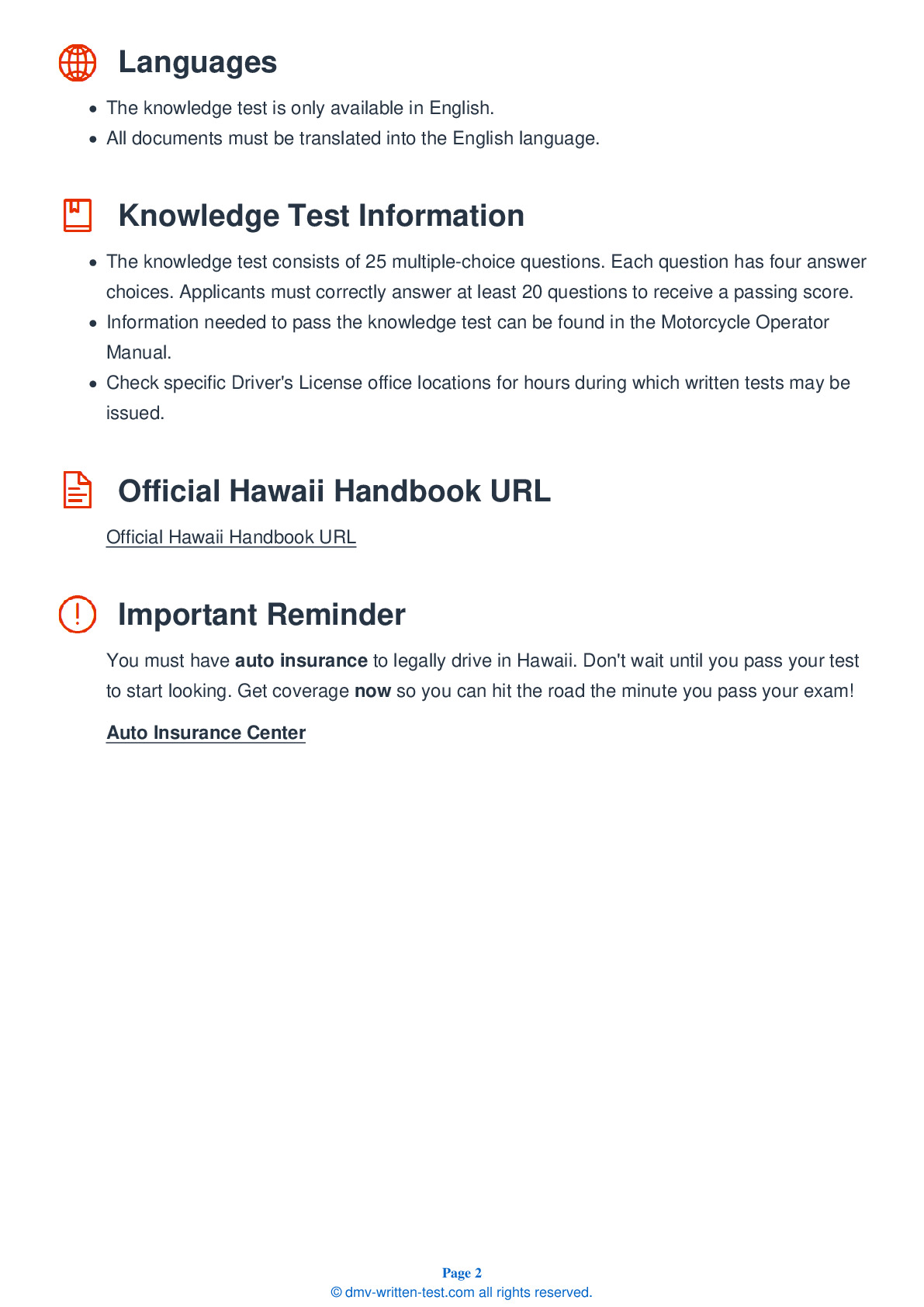2025 Hawaii Motorcycle Permit Test 14
The following questions are from real DMV written motorcycle permit tests. These are some of the actual permit questions you will face in Hawaii when getting your motorcycle learners permit. Each motorcycle theory practice test question has three answer choices. Select one answer for each question and select "grade this section." You can find this button at the bottom of the drivers license quiz. For a complete list of questions and answers for Hawaii please visit https://cheat-sheets.dmv-written-test.com/en/hawaii/motorcycle.
Number of Tests
Number of Question
Passing Score
7. What is the best lane position for a motorcycle?
Explanation
No single lane position is always best and no single lane position should always be avoided. Adjust your lane position as road and traffic conditions change, choosing a position that will maximize your space cushion and allow other drivers to see you more easily.
8. When crossing railroad tracks that are parallel to the road, you should:
Explanation
To safely cross railroad tracks, trolley tracks, or pavement seams running parallel to your lane, move to a lane position that will allow you to cross them at an angle of at least 45 degrees. Then, make a quick, sharp turn. If you try to edge across, the tracks or seam could catch your tires and throw you off balance.
9. In hot weather, wearing a riding jacket:
Explanation
A riding jacket and long pants should still be worn when riding in hot weather. In addition to their other safety benefits, they can protect a rider from heat exhaustion and dehydration.
10. Hearing protection:
Explanation
Exposure to wind and engine noise can damage a motorcyclist's hearing, even if they are wearing a helmet. Proper hearing protection, such as ear plugs, can prevent hearing damage while still allowing the rider to hear important sounds, such as car horns and emergency sirens.
11. When both braking and swerving must be done to avoid an unexpected hazard, a rider should:
Explanation
Because you need adequate traction to swerve safely, you should not brake and swerve at the same time. Instead, if you approach a hazard that requires you to brake and swerve, you should perform one action and then the other.
12. When riding in a group, which rider should set the pace?
Explanation




